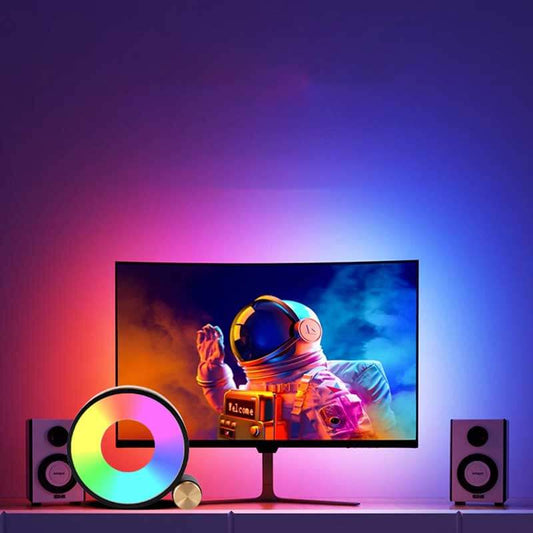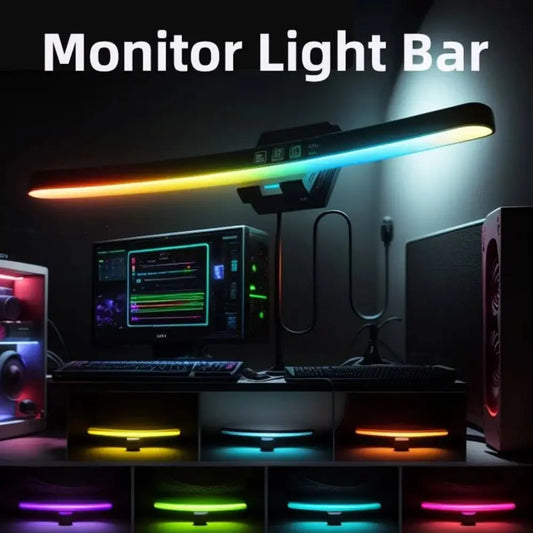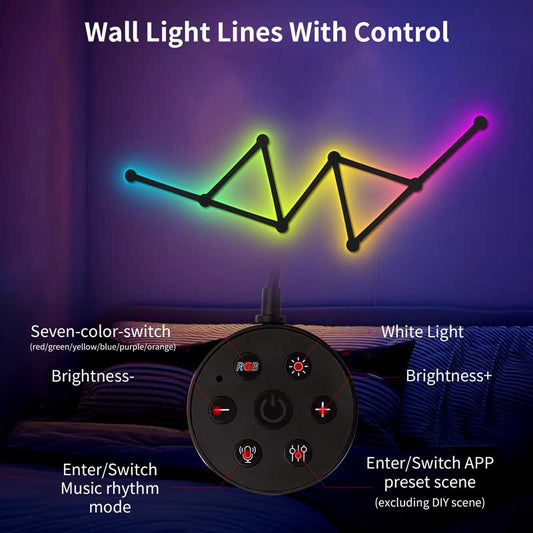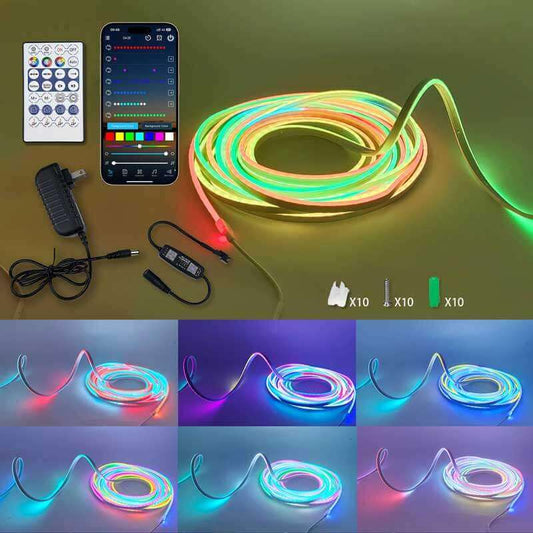What color improves gaming?
Share
the color of your lighting can play a significant role in enhancing your gaming experience by affecting your mood, focus, and even your performance. Different colors evoke different psychological responses, and when used strategically, they can improve your gaming environment. Here’s how various colors can improve your gaming:
1. Blue: Focus and Calm
- Effect: Blue is often associated with calmness, focus, and concentration. It has a cooling effect on the mind and body, making it a good color for games that require strategic thinking, such as puzzle games, simulations, or tactical shooters.
- Why it helps: Blue lighting can reduce stress and promote mental clarity, helping you stay calm and focused for longer gaming sessions.
- Best for: Long, focused gameplay, strategy games, or relaxing games.
2. Red: Energy and Intensity
- Effect: Red is known for increasing energy and stimulating excitement. It can raise adrenaline levels, which makes it a great color for fast-paced, action-packed games.
- Why it helps: Red lighting creates a sense of urgency and intensity, which can make combat and high-stakes gameplay feel more exhilarating. It’s perfect for competitive gaming or games that require quick reflexes.
- Best for: First-person shooters (FPS), racing games, action games, or competitive multiplayer games.
3. Green: Balance and Relaxation
- Effect: Green is a calming, balanced color associated with nature and harmony. It helps reduce eye strain and is soothing to the mind.
- Why it helps: If you’re gaming for extended periods, green lighting can prevent fatigue and keep you from feeling overwhelmed. It creates a relaxing atmosphere that can help with endurance during long gaming sessions.
- Best for: Adventure games, open-world exploration games, or games where you want to maintain a relaxed state.
4. Yellow: Alertness and Happiness
- Effect: Yellow is a bright and vibrant color that stimulates energy and optimism. It’s known for boosting attention and alertness.
- Why it helps: Yellow lighting can improve reaction time and focus, especially when you need to stay sharp. It also helps improve mood and reduces the feeling of fatigue, making it a good choice for marathon gaming sessions.
- Best for: Puzzle games, platformers, casual gaming, or when you need to maintain a positive and alert mindset.
5. White: Clarity and Neutrality
- Effect: White is a neutral color that doesn’t cause distraction and provides a clean, crisp look. It’s often used for general lighting because it doesn’t overpower the atmosphere.
- Why it helps: White lighting can help you stay focused without overwhelming your senses. It can create an environment that’s neither too stimulating nor too relaxing, allowing you to stay sharp and aware of the game.
- Best for: Everyday gaming sessions, RPGs, or games with a mix of action and strategy.
6. Purple: Creativity and Immersion
- Effect: Purple is a mix of red and blue, combining the intensity of red with the calming effects of blue. It’s often associated with creativity, mystery, and luxury.
- Why it helps: Purple can stimulate creativity and imaginative thinking, making it ideal for fantasy games, RPGs, or anything that involves a deep level of immersion.
- Best for: RPGs, fantasy games, or games where you want to feel creatively engaged.
7. Cyan/Teal: Focus and Clarity
- Effect: Cyan or teal is a soothing yet energizing color, providing a balance between blue’s calming effect and green’s refreshing vibe.
- Why it helps: This color helps maintain focus while providing a refreshing atmosphere, making it perfect for puzzle games or strategy games where attention to detail is crucial.
- Best for: Strategy games, puzzle games, or games requiring deep focus and clarity.
8. Pink: Playfulness and Fun
- Effect: Pink is a fun, playful color that can evoke feelings of joy and excitement. It’s less intense than red but still energetic and vibrant.
- Why it helps: Pink lighting creates a lighthearted atmosphere, making it great for casual games, simulation games, or games that are more about enjoyment than competition.
- Best for: Casual gaming, simulation games, or games that require a lighter, fun atmosphere.
How to Use Color for Your Gaming Setup:
- Ambient Lighting: Use color-changing LED strips or smart bulbs around your gaming desk or behind your monitor. This can enhance the overall vibe and sync with in-game actions.
- Focus on the Task: For games requiring deep focus (like strategy games or RPGs), consider using blue or cyan lighting to help you concentrate. For high-energy games (like FPS or racing), go for red lighting to enhance excitement.
- Eye Comfort: If you’re gaming for long hours, try to use green lighting to reduce eye strain. You can also adjust the brightness to suit your comfort level.
- Dynamic Lighting: Consider RGB lights that can react to your game. Some lighting systems (like Philips Hue or Corsair iCUE) can change colors based on in-game events, such as a red flash when taking damage or a calm blue when exploring.
Conclusion:
The best color for gaming depends on the type of game you're playing and the experience you're seeking. Red and blue are great for intense action, while green and cyan are more soothing and help with focus. Yellow can boost alertness, and purple adds creativity and immersion. Ultimately, LED lighting offers the flexibility to change the atmosphere according to your gaming needs, allowing you to create a more engaging and personalized experience.




